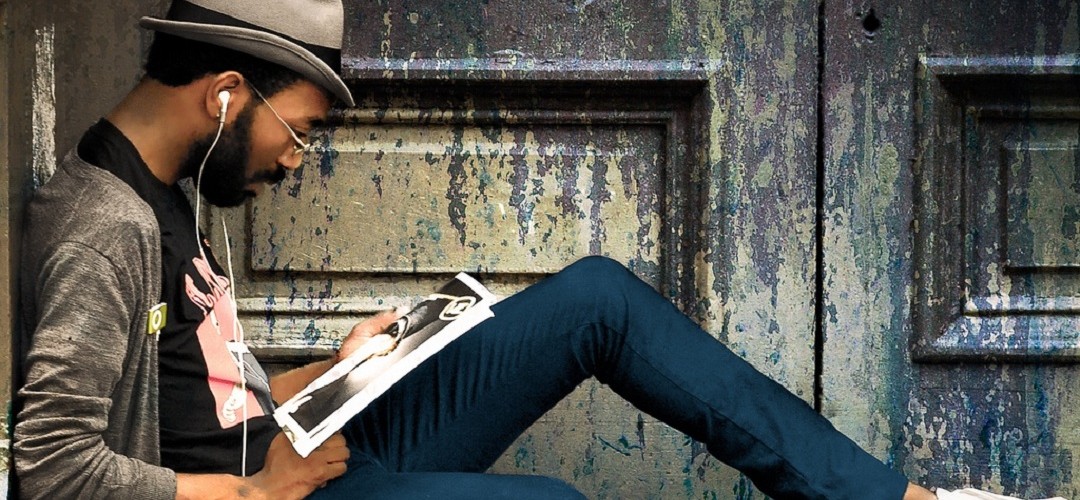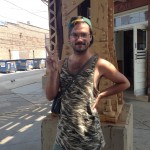Photo credit: Farah Mohammed
(To get into the mood of this article, I highly recommend hitting the play button below and play some Debussy. Who doesn’t like Debussy? Or click through and find something else you like! Courtesy of the Chicago Symphony Orchestra.)
“Kids can’t find anything to learn when they are in a situation that is not conducive for learning. And a museum falls into this category for 90% of kids.” -Penelope Trunk
Trunk, a career advisor from Wisconsin and homeschooling mother, is not an expert on museums or childhood development. But her post on the dwindling relevance of museums was noticed by Reach Advisors, a museum consultancy company. They used it to highlight public perception for cultural institutions nationwide and the reason they need to re-brand themselves to attract new visitors.
Sadly, Reach Advisors and Trunk are not wrong. Museums, and cultural centers in general, are not gaining more visitors as the U.S. population balloons. Adults in the U.S. who have attended a “benchmark activity” – museums, concerts, art galleries, plays and musicals – has stagnated over the past 20 years according to the Survey of Public Participation in the Arts conducted every four years by The National Endowment for the Arts. The good news is, museums are working from a position of strength — they just have to do a better job keeping up with the times, a Smithsonian presentation suggests. By putting information about exhibits online, 57% of people are more interested in visiting in person. People put more trust in information coming from museums and established cultural institutions, and they’re eager to see the exhibits in person if they feel it will add to the experience.
Chicago’s organizations have taken this message to heart. They are evolving with their audience and are providing new experiences for visitors and patrons who have grown up in the digital age.
Area museums are releasing self-guided tour apps and educational games alongside exhibits, orchestras are adding to their traditional schedule to include events aimed at new audiences and fans of cross-genre music, and the efforts seem to be working. The Chicago Symphony Orchestra’s new programs have been filling more seats and museums’ total visitor numbers are growing.
Here are just a few examples of what Chicago institutions are putting out:
Earlier this year, the Field Museum released an app which gives highlight tours of various exhibits throughout the building. Still being rolled out, the app doesn’t cover the entire museum yet but the staff hopes to add more tours later this year. Currently, the app has tours for the Stanley Field Hall, museum highlights, and the taxidermy exhibit.
The Field Museum app is available outside of the museum, but being in the museum allows visitors access to extra information, from articles to videos and panoramic pictures, like the one shown here.
Visitors may also create their own tours and share it with others.
Public Relations Manager Emily Waldron said the app has 20,000 downloads so far, and it’s usage is currently being studied to find ways of making it better and easier to use.
However, reports on past years show that The Field’s efforts at attracting new visitors is greatly successful, with successes like the three million YoutTube views on a series of videos in only six months, so it will be little surprise if the tour app catches on.
Similar to the Field Museum, the Art Institute provides guided tours through their app, offering significantly more information to visitors who use it. It also boasts a mapping feature, which can tell you where you are if you’re connected to the building’s wi-fi.
Launched a year before the Field Museum’s, the Art Institute’s app already has all of its collections programmed. Visitors can choose highlight tours by collection or theme.
Once visitors are directed to key pieces of the collection, it offers detailed information about the piece and a link to even more information for the extra-curious.
The app makes it hard to get lost (which is usually quite easy in the Art Institute) by providing step-by-step directions from wherever you are to wherever you want to be.
The Art Institute was able to boast an increase in both admissions and membership dues in 2013, but these figures do not cover the period since the app was released and it’s impact cannot be measured. Yet, it’s hard to believe the app will not play favorably in visitors’ hands, creating a more enjoyable experience they will want to repeat.

Focused on educating children (and the young at heart), the Museum of Science and Industry has created a handful of games and apps that tie in with exhibits to provide visitors with a more hands-on learning experience. Here are a few of the latest:

Half game and half chemistry lesson, goREACT presents users with a periodic table of elements and encourages them to start throwing elements together until they start reacting. It also provides helpful hints about possible concoctions, facts about the elements, and information about the chemicals users eventually make. goREACT does not go with any standing exhibit at the museum.

Designed to get kids (or adults, don’t judge) to be more open about what they eat, Chew or Die tricks users into thinking they are in a competition with their friends and other users to fuel healthy competition. They earn ‘badges’ by completing eating challenges, such as replacing white bread with a tortilla or rice, and uploading a picture of the food. Again, this app is not paired with any physical exhibit at the museum.
Available only on iPad, Virtual Heart is a tour of the human heart in all its glory. Designed as an interactive tour, it is designed to add to the museum’s exhibit “YOU! The Experience” on the human body and healthy living.
The Museum of Science and Industry is usually among the most visited museums in the city because its exhibits attract many school groups and children, and for the past few years it has topped the list. The museum says its popularity comes from the high level of interactivity provided by exhibits, apps and games, allowing visitors to immerse themselves in learning.
The CSO is conscious of and, according to Director of Marketing Liz Madeja, committed to changing with the times to reach new and evolving audiences. From less traditional concerts to educational resources, the CSO has a handful of programs designed with this mission in mind. Besides these programs, the CSO also made the decision to change one very simple practice: the time some concerts are held. Some Friday concerts for Beyond the Score (discussed below) are now being held in the evening instead of an afternoon matinee to open them up to a larger number of people.
If you followed the suggestion at the very beginning of the article (thank you), you’re already enjoying the CSO’s SoundCloud account. Used to distribute concert recordings, interviews, and radio programs for free, the account is an effort by the CSO to give the public previews to upcoming shows, more information about setlists, and easy access to traditional classical music, in the hopes of drawing larger audiences.
If you chose not to play the song provided at the top (it’s okay, I won’t take it personally), you can find their full public library on their SoundCloud account here:

Around for over 15 years, musicNOW showcases cross-genre and more modern chamber music written by the CSO’s resident composers, currently Mason Bates and Anna Clyne, and other living composers around the world. Madeja said the CSO also treats this program as a testing ground for new ways to distribute information during concerts, from replacing printed programs with video introductions and text message alerts to pre- and post-concert mixers with the musicians and composers, featuring DJs to set the mood. Madeja says the program is here to stay, but the direction it takes will change every four to five years when the CSO changes resident composers.
Madeja said musicNOW is growing in popularity, especially in the past half decade, and it is beginning to come close to selling out the Harris Theater where the concerts are held, which holds 800 to 1000 audience members.

Madeja said one of the most frequently made comment the public shared with the CSO is “I loved the concert, but I wish I knew more about it.” To meet this need, the CSO created the “Sounds & Stories” section of their website. Offering articles, videos, and previews, the program attempts to give more depth to the audience’s experience whether they visit the page before or after an event. The program is only in its second year, but Madeja said it is already being well used and its usage metrics are allowing the CSO to better define what the public wants out of their experience.
Another way to address the desire by audience members to know more about the music, Beyond the Score is a CSO production that mixes the music, live theater, and video presentations to tell the music’s story and history. Some shows focus on a single work and others on a composer, giving background to the music. The CSO has found that this program is so successful that they have begun licensing it out to other orchestras throughout the country.
For example, here is a full recording of the story behind German composer Hector Berlioz and his work Symphonie fantastique:
Individually these efforts seem to be helping the CSO gain new patrons and visitors, and, according to the 2013 Annual Report, together they are helping the organization lift out of deficit. With increases in sales and donations, the CSO is still operating at a slight deficit, but not nearly as deeply as recent years.
Many research initiatives by NASA and other space research organizations are finding a problem new to the world of science: there is too much data for researchers to parse through. The Hubble has collected images of billions of galaxies that need to be categorized, the surface of Mars is imaged in crazy minute detail, and, once thought rare, extra-system planets are popping up like distant cousins after you win the lottery.
The Adler sees this as an opportunity, not a problem. As part of the Citizen Science Alliance, members of the public can come to Adler to learn about on-going research projects as well as how the research is conducted, all while actually participating in it.
Completed in 2012 with a price tag of 14 million dollars, the Grainger Sky Theater is one of the most advanced domed theaters in the country, offering live presentations of the cloak of stars that surrounds Earth, the digital exploration of the solar system up close, and deep dives into the universe at large in greater definition than was previously possible.
Adler’s Public Relations and New Media Manager Nicholas Glenn said they do not track how each exhibit attracts visitors, but the latest Annual Report highlights steadily growing attendance over the past five years, especially since the Grainger Theater was finished.










